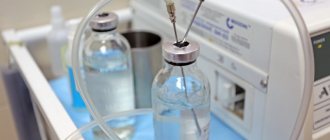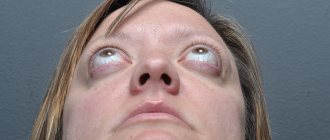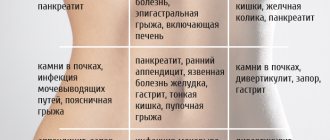Author:
- Sadykhov Rahim Agalarovich
ENT pathology expert
3.63 (Votes: 30)
The sense of smell is a sense that enriches our emotions and is capable of firmly fixing a smell in memory. In everyday life, we do not remember it, taking its presence for granted. Moreover, its loss is the clearest symptom of a number of diseases.
Anosmia (ICD-10 - R43) is a complete loss of smell (a person ceases to feel and distinguish odors). Anosmia is often combined with another symptom – loss of taste (ageusia). This is due to the fact that taste and olfactory receptors are in close cooperation. Anosmia is more common in men. In both sexes it can be a transient condition or persist for a long time.
Impaired sense of smell can lead to serious psychological complexes. A person may think that there is a bad smell coming from him or his things, but he does not feel it. Another situation: loss of smell (anosmia) leads to the fact that danger cannot be recognized in time, for example, a gas leak, the appearance of a burning or smoke smell. For chefs, anosmia can actually cost them their careers.
Loss of smell and ENT symptoms in COVID-19
Impaired sense of smell after a viral infection is not uncommon in ENT practice; it occurs on average in 11% of patients. In some situations it lasts a long time and in 22-26% of cases becomes the reason for visiting a doctor.
In addition to coronavirus, rhinoviruses, parainfluenza viruses and the Epstein-Barr virus cause impaired sense of smell.
Types of smell impairment:
- anosmia - complete loss of smell;
- hyposmia - partial loss of smell;
- parosmia - changes in the perception of smells;
- phantosmia - the perception of various odors in their absence;
- acosmia - perverted perception of smells.
Based on scientific research data, it can be argued that impaired sense of smell during viral infections can occur in two ways.
Why is the sense of smell impaired during viral infections?
The first mechanism: damage to the cells surrounding (supporting) the olfactory epithelium, or damage to the olfactory neurons themselves in the nasal cavity. In this case, a deeper penetration of viruses along the nerve fibers of the olfactory pathway up to the cerebral cortex can also be observed.
The second mechanism: against the background of a viral infection, swelling of the mucous membrane occurs, as a result of which the normal functioning of the olfactory zone is disrupted.
The mechanism of smell impairment in COVID-19 has not been fully studied; specialists have divided opinions. The fact is that for the penetration of the SARS-Cov-2 virus, the presence of a certain protein is required - ACE-2, which, in particular, is actively secreted on the surface of the epithelium of the nasal cavity and the supporting cells of the olfactory zone. Olfactory neurons themselves do not synthesize this protein. But it is possible that the virus can migrate from these cells directly to the olfactory neurons, destroying them and penetrating into the deeper parts of the olfactory pathways in the brain.
Research on smell impairment in COVID-19
The first evidence of impaired sense of smell began to appear in the spring of 2020. Various types of smell impairment were observed in 56–85% of patients. Anosmia was the most common (approximately 70% of cases), followed by hyposmia (about 20% of cases). Other types of olfactory impairment, such as parosmia and acosmia, were much less common.
In September 2021, a large study was published, the results of which showed that among 3739 patients surveyed, smell impairment was observed in an average of 61%.
The timing of the onset of smell loss varies among patients. A small proportion (11–26% of cases) notice this symptom before any symptoms appear, but the most common smell disturbance occurs during (52%) or after the onset of symptoms (26%). The same work notes that in 45% of cases, impaired sense of smell was the only symptom of the disease. Problems with the perception of odors are most often observed in patients with chronic diseases of the nasal cavity, in people who smoke, and also in women.
There is also a disturbance in the perception of tastes. It is believed that the mechanism of taste disorder is secondary in nature and occurs without damage to the taste buds and nerve endings in the thickness of the tongue - the troubles are associated with damage to the olfactory zone in the nasal cavity and the inability to catch odors while eating. However, in approximately 11% of cases, taste disorder with COVID-19 can occur without loss of smell.
Main symptoms of coronavirus
Before we tell you how quickly the symptoms of anosmia disappear, we will tell you about the main manifestations of coronavirus. This disease is completely new, so the study of the mechanisms of its development and progression continues to this day.
If the virus has entered the body, after one to two weeks the person faces:
- Increased body temperature. How many degrees the difference from the norm will be depends on the individual characteristics of the body. Usually the thermometer shows from 37 to 38°C, but some people record higher numbers. A high temperature is a signal from the immune system that there is an active fight against the virus. It does not need to be knocked down until it reaches 38.5°C.
- Dry cough. In the first days of the disease, a sore throat is mild and does not cause serious discomfort. But then the symptom may progress. Then breathing becomes difficult, and a growing pain in the throat appears. There may be a feeling of lack of air. In severe cases, patients begin to choke, which is very dangerous. The situation is aggravated by the fact that the nose is very stuffy after coronavirus.
- General weakness. Covid-19 positive patients feel lethargic and helpless. They find it difficult to move. Even the simplest work causes severe sweating and dizziness. Negative symptoms are accompanied by headaches. Possible loss of consciousness. If the virus infects muscle tissue, myalgia appears.
- Difficulty breathing. Most people exposed to COVID-19 experience severe damage to their lung tissue. Because of this, the lungs lose their ability to work normally and cannot cope with the load. The patient suffers from asthma attacks. He finds it difficult to take a deep breath. It is difficult to say when breathing problems with coronavirus will appear. This usually occurs 10-14 days after infection. Some people don't experience them at all.
- Digestive disorders. Having penetrated the tissues of the gastrointestinal tract, viral agents cause the development of severe inflammation. Digestive processes are disrupted. Nausea, vomiting, and diarrhea appear. Abdominal colic may bother you.
- Distorted sense of smell. The infected person either does not smell smells at all or perceives them distorted. Often this symptom is the only one with coronavirus. The patient notices that he is unable to distinguish odors and decides to undergo diagnostics. Only then does he know that he is infected and is a carrier of a dangerous disease.
The severity of COVID-19 symptoms varies from person to person. In pensioners, the disease is usually more severe. Young adults tolerate it more easily (provided that they do not have severe chronic diseases). If coronavirus affects the lungs of a newborn baby, the risk of death increases due to systemic damage to internal organs.
Time frame for recovery of sense of smell in patients with coronavirus
The greatest interest today is the timing of the restoration of smell. What to do if after an illness the smells have not been restored or have been restored, but not completely? It is encouraging that, regardless of the type of smell disorder, in most cases (72–85%), recovery or significant improvement occurs, according to various sources, within 8–14 days from the onset of symptoms. This reflects the course of the disease and the so-called viral load, which predominates in the nasal cavity and nasopharynx.
Along with a decrease in the viral presence and recovery, the sense of smell is restored or significantly improved in most patients. However, a considerable proportion of patients (25–40%) who have a disturbance in their sense of smell note persistent persistence of this problem for two months.
Treatment methods for smell disorders and their effectiveness
Given that the nature of smell impairment in COVID-19 is not yet fully understood, studies have tried various treatment methods. Of course, they differed little from the previously used methods for other viral infections that are accompanied by impaired sense of smell.
Anatomical changes in the nasal cavity
The sense of smell can significantly deteriorate or disappear completely due to such disorders as:
- Proliferation of polyps or adenoids.
- Deviation of the nasal septum.
- Tumor neoplasms.
- Hypertrophy of the nasal concha.
To bring your sense of smell back to normal, you need to eliminate existing defects. Most often, such patients require the help of a surgeon.
Poisons and chemicals
. Problems with the sense of smell occur in people who, due to professional duties, are forced to come into contact with toxic substances. These include: paint and varnish products, oil industry products, acid fumes, etc. Working in hazardous industries threatens a complete loss of smell.
Methods for treating smell disorders
- rinsing the nose with saline solutions;
- use of hormonal-based sprays to relieve inflammation and swelling (strictly as prescribed by a doctor);
- olfactory training with essential oils.
It should be noted that scientists have not been able to establish a relationship between the use of these products and the restoration of the sense of smell, that is, the effectiveness of these treatment methods for impaired smell in COVID-19 has not been proven. Olfactory training with essential oils can be recommended for those whose sense of smell has been partially restored, but not in cases where the perception of smells has been distorted or other disturbances have occurred. The evidence base for the effectiveness of olfactory training for smell disorders after Covid-19 is weak.
Is the sense of smell necessarily lost after coronavirus?
Doctors call anosmia the main symptom of Covid. The patient may not suffer from nasal congestion or high body temperature. He may also not have a dry, choking cough. But he is already sick, he just doesn’t know it. And in such a situation, the diagnostic sign is often deterioration and absence of smell.
The symptom is not typical for all patients. But if it appears, you need to immediately seek medical help and get tested for coronavirus. Interestingly, with Covid, anosmia often develops gradually. That is, on the first day the sense of smell becomes a little dull, and after a few days the problem becomes very pronounced. It is not always possible to completely lose the ability to distinguish aromas.
Olfactory impairment and quality of life
Of course, the loss of function of any of the senses is a significant problem, in some situations equated to disability. To assess the degree of smell impairment and the impact of this problem on the quality of life, special questionnaires were developed. Some patients have been found to become more irritable, have increased levels of anxiety, may have decreased appetite, develop social withdrawal, and are at risk of losing their sense of dangerous odors, such as gas leaks. All this, of course, creates the need to solve these problems.
Prospects for restoring the sense of smell in case of its permanent loss
Scientific research data have shown that regeneration of the olfactory epithelium after viral infections occurs through neural stem cells, from which both the olfactory epithelium and the cells supporting olfactory neurons are regenerated. With a chronic inflammatory process in the nasal cavity, this regenerative process is disrupted. Perhaps in the future, drugs will be developed to stimulate the regenerative process or protocols will be created for transplanting stem cells responsible for the regeneration of olfactory neurons into a special area in the nasal cavity. One way or another, we can only believe that these studies will be initiated by analogy with stem cell transplantation for other pathologies in the human body.
How to treat anosmia?
The causes and treatment of anosmia are closely related to each other. Individualized therapy is selected taking into account the identified pathology. Thus, the treatment of anosmia during coronavirus and other acute respiratory infections involves the local use of nasal sprays that have anti-inflammatory, immunomodulatory and secretolytic effects.
Anosmia caused by hyperplasia of the nasal mucosa and/or paranasal sinuses requires removal of the resulting polyps. Currently, such operations are performed using minimally invasive methods with a short rehabilitation period.
An otolaryngologist will tell you how to cure anosmia after a detailed examination of your body. At ENT Clinic No. 1, consultations are conducted by qualified specialists who regularly improve the level of their theoretical and practical skills. This makes it possible to treat anosmia in accordance with the most modern protocols for providing medical care for this pathology. Make an appointment at a convenient time at ENT Clinic No. 1!








